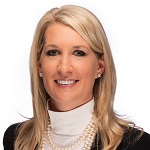When was the last time an important task slipped through the cracks? A client signature wasn’t obtained, a form wasn’t sent, or a planned client event didn’t come to fruition. When there are gaps or overlaps in team members’ primary responsibilities, items can be missed when it’s assumed that someone is handling them.
Can each of your team members articulate what their primary responsibilities are and how they’re evaluated? Are responsibilities logged in an accessible team org chart or manual? If not, consider asking each team member to write down everything they’re currently managing. Then schedule a team meeting to discuss each person’s list.
You may be surprised that some members’ understanding of their role is quite different from what you envisioned. If that’s the case, don’t panic. This discovery can spark a productive discussion, helping you redefine team roles and responsibilities based on team members’ skills and experience while eliminating gaps and overlaps. To prevent additional breakdowns in team operations, compile this information into a document. Revisit the document at least twice a year, revising it as needed.
When considering team member roles and responsibilities, with their strengths and capacity in mind, ask yourself the following questions:
- In what areas should the team member increase their focus?
- Which activities should the team member reduce their involvement in?
- What actions should the team member cease completely?
- Are there any issues that need to be addressed to help harmonize the team?
Note: Innate talents, interests, and life experiences are frequently overlooked in this process in favor of formal education, licensing, designations, etc. While these elements are crucial, aspects like caregiving experience, tech savviness, and a knack for hosting events can enhance your practice.
The payoff for implementing this process? Greater job satisfaction and increased team efficiency and productivity. When expectations are explicitly outlined, and the roles and responsibilities of team members are in sync with their capabilities, the higher their motivation to achieve their goals.






